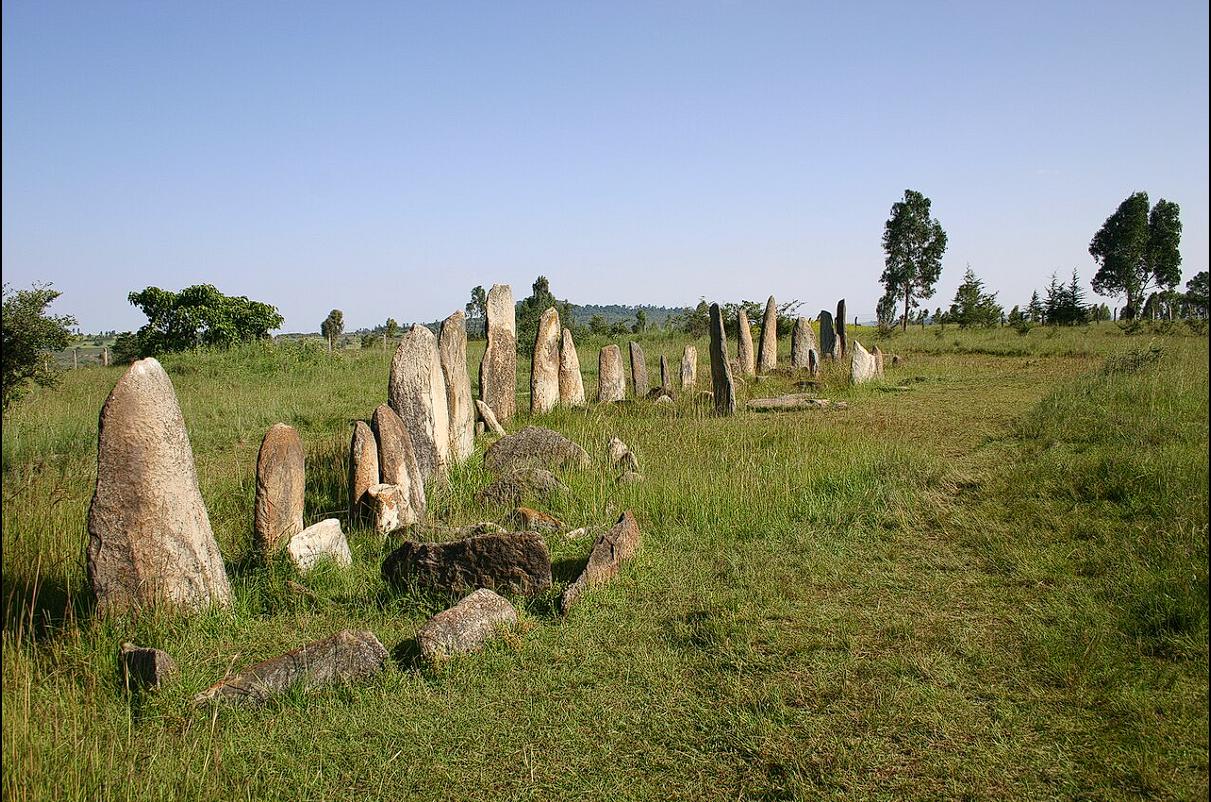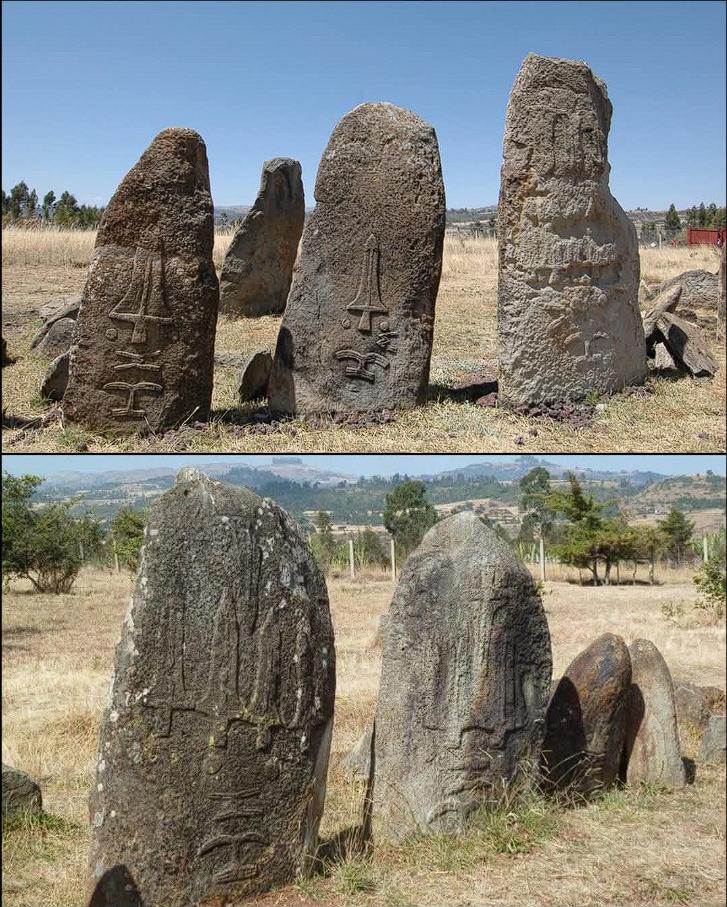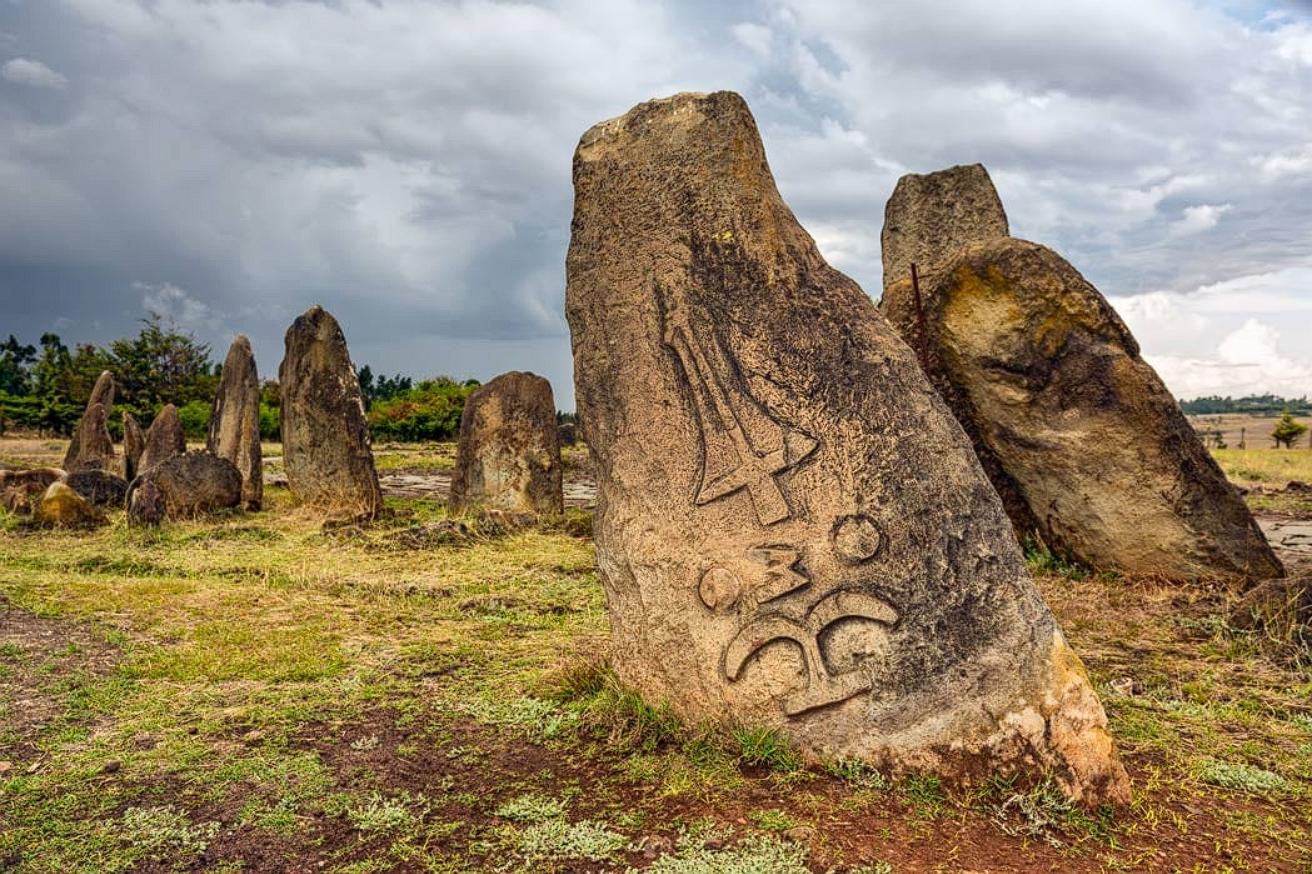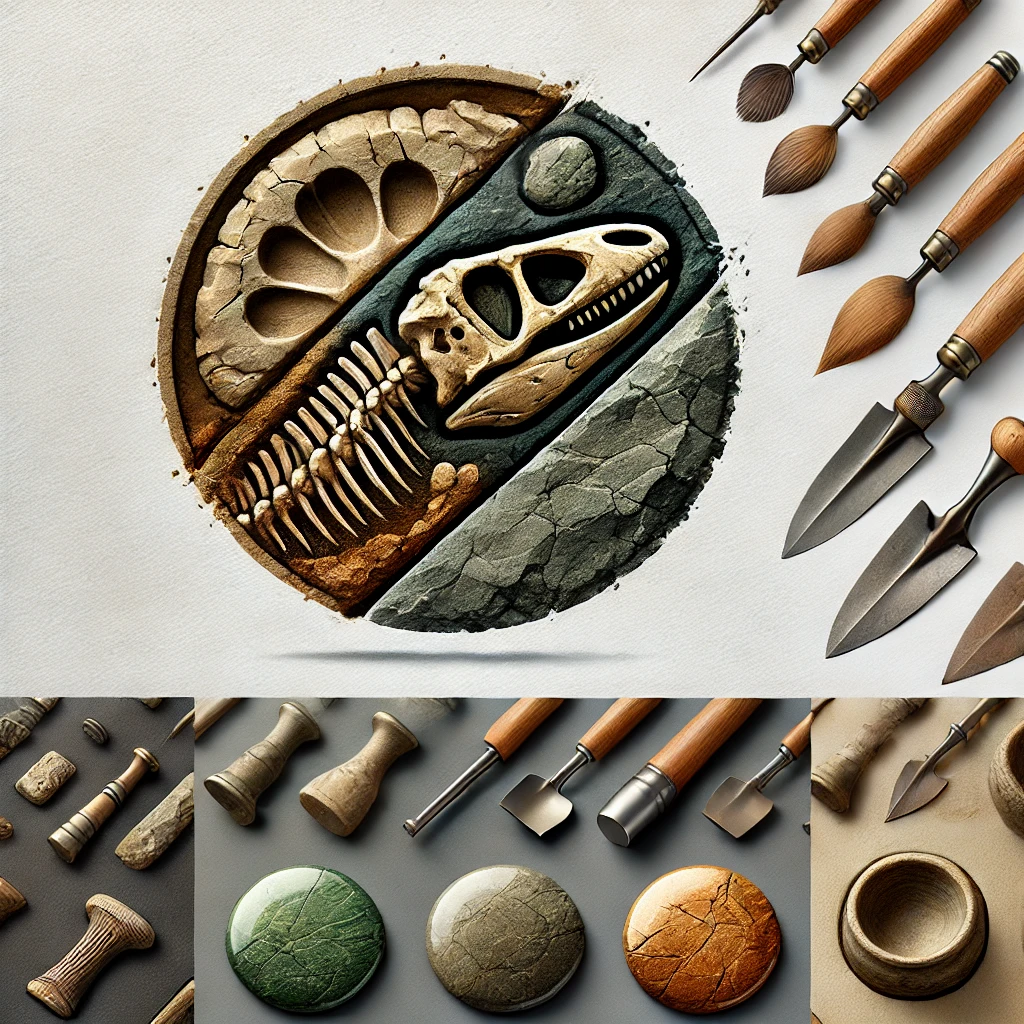Echoes in Stone: Exploring the Mystery of the Tiya Stelae in Ethiopia
In the lush green highlands south of Addis Ababa, Ethiopia, rise dozens of monolithic stones—standing silent, solemn, and strangely watchful. Known as the Tiya Stelae, these ancient monuments seem to mark something important, something long forgotten. Etched with symbols—spirals, swords, and shapes that defy easy interpretation—these sentinels have become one of Africa’s most haunting archaeological riddles.
Archaeologists date the site to between 1000 and 1500 A.D., but the culture that created it left behind no written records. Just these stones. And within them, perhaps, a glimpse into a civilization we’ve yet to fully understand.
The Tiya Stelae Site: A Landscape of Memory
Where is Tiya and Why is it Important?
Tiya is located about 80 kilometers south of Ethiopia’s capital. From a distance, the site looks like a simple stone field. But as you approach, the gravity of these monoliths becomes apparent.
There are 36 standing stones in total. Of those, 32 are carved—each with distinct markings that suggest ritual, honor, or passage.
In 1980, Tiya was inscribed as a UNESCO World Heritage Site, recognized not only for its preservation but also for its unanswered questions.
Sacred Symbols and Forgotten Scripts
The most prominent carvings include swords with curved blades, abstract spirals, and floral-like forms. These symbols appear deliberate and recurring—but what do they mean?
Some believe the curved swords, often seen on multiple stones, represent warriors or chiefs. Others propose these were clan symbols, spiritual emblems, or even celestial markers.
Burials Beneath the Stones
Excavations at Tiya have uncovered human remains beneath many of the stelae. This has led scholars to conclude the stones were grave markers—perhaps honoring revered leaders or spiritual figures.
Yet, the layout of the stones and their artistic flourishes suggest more than just burial. There is symmetry, intention, and mystery in the way they were placed.
The Lost Civilization Behind the Tiya Stelae
Who Built the Tiya Stelae?
No known Ethiopian empire from the 11th to 15th centuries left records of building such stelae. The local Gurage people, who now inhabit the region, hold oral traditions—but even these are quiet about the origins of the site.
This leaves historians and archaeologists to speculate. Were these monuments built by a warrior society? A religious sect? A people who believed in honoring the dead with stone memories?
A Legacy Without Language
Unlike Egyptian hieroglyphs or Mesopotamian cuneiform, the Tiya Stelae offer no script, no names, no dates. This absence is what makes the site so captivating. The meaning is buried—both literally and symbolically.
Researchers compare it to other stelae cultures, such as those in Sudan or Madagascar. Still, nothing matches the symbolism of Tiya exactly.
Connections Across Time and Space?
Some scholars point to the resemblance between the spiral and sword motifs in Tiya and symbols found in other ancient parts of Africa. Could there have been a shared symbolic language across ancient African cultures? Or was this a unique dialect of stone, spoken only in Tiya?
Interpretations and Theories: What the Stones Might Be Saying
Memorials of a Warrior Society?
One of the most accepted theories is that Tiya was a burial ground for warriors. The swords etched into the stones, often with hilt and blade details, suggest martial honor.
This could mean the stones marked individuals who defended or led their community—etched forever in granite.
Astronomical or Cosmic Markers?
Others suggest the stelae were not just for the dead but for the cosmos. Some of the carvings resemble constellations or astronomical patterns.
Could Tiya have been a calendar? A ritual site tied to solstices or harvests?
Feminine Symbols and Fertility Rites?
Still others point to the floral and spiral motifs as symbols of fertility or womanhood. Perhaps these stones honored mothers, birth, or divine femininity.
This diversity in interpretation only deepens the mystery—were these symbols shared, or did each stone have a unique story?
Tiya Today: Preservation and Pilgrimage
A Sacred Site in Modern Ethiopia
For many Ethiopians, Tiya is more than an archaeological curiosity. It’s a sacred place. Locals often visit in silence, offering small tokens, as if still connected to the past.
The Ethiopian government, along with UNESCO, has made efforts to preserve the site from erosion, looting, and modern development.
Tourism and Cultural Education
Tiya has slowly become a destination for cultural tourism. Visitors are drawn by its beauty, but also by its enigma. Educational programs are growing, aiming to inform both locals and tourists about the site’s importance.
Yet, many feel more could be done to promote it as a global archaeological treasure.
Threats from Time and Modernity
Like many ancient sites, Tiya faces the threat of climate change, infrastructure development, and neglect. Without active preservation, this irreplaceable window into the past could fade—stone by stone.
Why the Tiya Stelae Matter
They Remind Us History Has Gaps
The Tiya Stelae stand as a testament to a civilization we barely understand. They challenge our assumption that history is fully mapped—that everything important has been documented.
Tiya reminds us of what we don’t know.
They Prove Art Exists Beyond Empire
These carvings were not created by a known empire. And yet, they possess elegance, symbolism, and intention.
Tiya proves that even outside the great written civilizations, art flourished, spirituality thrived, and memory was sacred.
They Invite Us to Imagine
More than anything, the Tiya stones stir the imagination. Who were these people? What did they believe? What songs did they sing as they carved granite to honor their dead?
Tiya does not give us answers. It gives us the right questions.
Conclusion: Listening to the Stones
The stelae of Tiya are not merely rocks rising from the earth—they are echoes. Echoes of voices, beliefs, and lives that history forgot to write down.
In their silence, they speak. And if we listen closely enough, they may just tell us who we are, and who we used to be.

CÁC TIN KHÁC
Mary Walton: The Forgotten Inventor Who Helped Clean Up America’s Cities
Tomb of Queen Nefertari in the Valley of the Queens, Egypt
Discover the Hypostyle Hall of the Temple of Hathor at Dendera
Venus de Losange: Unveiling the Mystery of a 20,000-Year-Old Paleolithic Icon